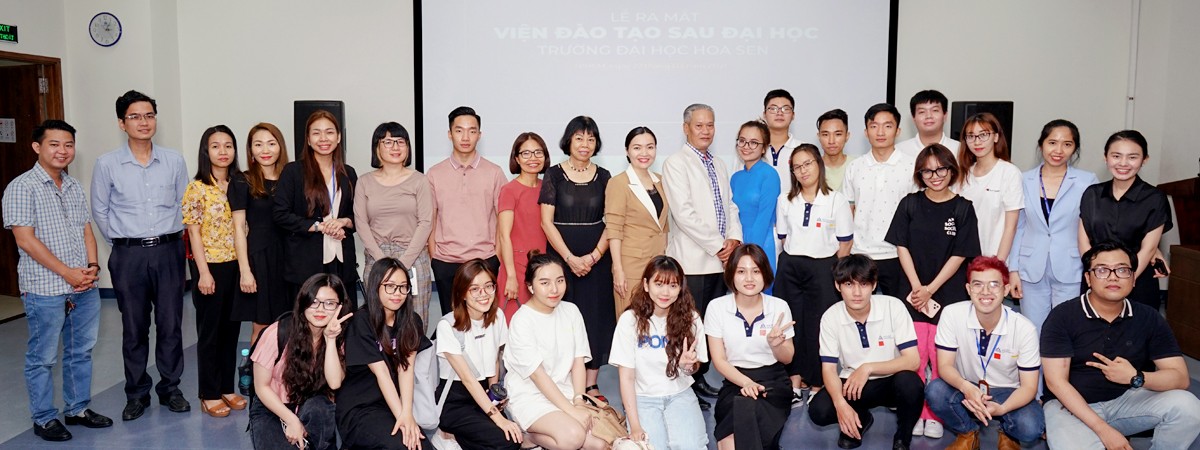
- 13/08/2020
- 2718 lượt xem
- Giáo trình
The central theme of this book—designing the project to be compatible with its operating milieu so that it is profitable and sustainable while providing goods and services demanded by clients—derives in part from our many years as consultants to industries around the world, where we have witnessed an inordinate quantity of idle and rusting, sometimes never used, capital facilities, almost invariably the result of poor planning. With about 90,000 failures occurring annually in the relatively propitious U.S. business environment alone, it’s clear that investing has always been a hazardous undertaking. Our planet is littered with remnants of investment ideas gone awry, projects that failed mainly because some critical design factor was improperly assessed.
Investment Project Design
Accumulating capital assets and applying them to provide future benefits is a practice that dates from antiquity. Over 250,000 years ago, ancestors of our species Homo sapiens invested their time and energy to fashion simple tools to improve the quality of their lives. Yet, even today, how capital resources are applied—decisions about when, where, and how they should be committed—presents its challenges and does not always produce expected results.
The central theme of this book—designing the project to be compatible with its operating milieu so that it is profitable and sustainable while providing goods and services demanded by clients—derives in part from our many years as consultants to industries around the world, where we have witnessed an inordinate quantity of idle and rusting, sometimes never used, capital facilities, almost invariably the result of poor planning. With about 90,000 failures occurring annually in the relatively propitious U.S. business environment alone, it’s clear that investing has always been a hazardous undertaking. Our planet is littered with remnants of investment ideas gone awry, projects that failed mainly because some critical design factor was improperly assessed.
Aside from the imponderable external factors that can sweep aside “the best-laid schemes o’ mice and men,” such as political and economic upheavals, one of the main deficiencies in project planning is that there is usually not enough of it, with decisions often made on the basis of anything from intuition to inadequate analysis. The recent meltdown of the financial sector in the United States and around the world is symptomatic of worldwide economic strains that are inimical to the interests of capital investors. We believe that the approaches we provide for designing, analyzing, and appraising a project can increase confidence in the investment decision in the minefield of the contemporary investment environment. Preinvestment study of appropriate breadth and depth, using these guidelines, vastly improves chances for a successful outcome.
A second motivation for the book involves potential benefits of a more holistic view of a project’s business environment than has been the case traditionally. Benefits for private and public investors are ordinarily measured against corporate financial goals and objectives. As lines of demarcation between private and public enterprise are blurred in the global economy through subsidies and other public support to major enterprises, and as some enterprise is either totally or partially nationalized, benefits can be additionally measured from the perspective of society—benefits to citizens from public investment and conformance with public goals of private investment—and at the same time enhance prospects for successful investment if project outcomes complement overarching social goals as enunciated by administrative, legislative, and judicial decision makers. We attempt to show how the economic perspective—a much broader view of the enterprise environment than is traditionally considered by investors—reduces risk and enhances prospects for a successful enterprise. This theme has been developed comprehensively in Chapter 5.
Our intention is to provide guidelines for steering along the hazardous road to success faced by private and public investors and their collaborators. While others have addressed the subject, we propose a more comprehensive framework of analysis for any project involving capital investment—large or small, in private and public sectors—one that clears up a number of important misconceptions about financial aspects of design and appraisal, and that aligns the project more compatibly with features of its operating environment than has heretofore been the norm.
Unanticipated impediments to the success of investment projects have included mismatches between internal characteristics of the enterprise, its personnel, and other project needs, and external aspects of the operational setting such as market dynamics, supply constraints, or environmental impacts. Often there is a failure to consider alternatives that would constitute more profitable applications of the time, energy, and other resources applied to the contemplated project.1
Maintenance and improvement of current material standards of living around the world requires new investment. In fact, at both macro (economy) and micro (enterprise) levels, new investment is needed just to maintain the current level of production capacity, which is diminished by technological obsolescence over time. Capital is also needed to accommodate advances in technology and for improving efficiency of existing production units. The question of whether a project is worthy of investment takes on ever-greater significance as capital accumulation for new projects is impeded by consumption demands of a growing population and by reticence of prospective investors and lenders in the face of increasing global uncertainties (e.g., depletion of critical resources and political instability).
An investment project becomes part of the economic, social, and ecological system within which it is intended to function and prosper. It affects the preexisting system of supply and demand and thereby alters its characteristics. Project success depends upon the degree of satisfaction that it provides to sponsors and collaborators, and also to the wider community that provides its market, its workers, and those whose lives are affected by its presence. A useful analogy for analyzing the relation between the project and its operational setting is the strategy of a biological organism seeking to survive and grow in its habitat.2 The enterprise seeks to earn its living by forging a useful link between resources and consumers, while at the same time fulfilling its own objectives. It has internal characteristics that interact with components and systems in the operational setting. Its health and wellbeing depend upon compatibility with friendly forces and building defenses against those that are hostile.
As the project faces the general hazards of doing business, producing goods and services for public consumption, one design aspect too often overlooked is the fact that even in situations where the project is designed for finite life, the investment milieu of which the project is a part has no temporal boundary. In other words, benefits in the form of capital accumulation resulting from the project are generally intended for reinvestment: Culmination of the project after successful operations will provide opportunities to consider new projects. For this reason, even from the perspective of capital accumulation, the issue of sustainability is relevant. Successor opportunities in future reinvestment rounds will demand resources, so it is prudent to design the project so that it relies to the maximum extent on sustainable consumption.3 Many studies show that it is not only environmentally beneficial but also good business to investigate the benefits of renewable, recycled, reduced, and reused resources in both the manufacturing process and in goods and services produced for industry and for public consumption.
Capital investment has not only shaped the modern world, but undoubtedly has contributed much to public welfare around the globe. Events of the early twenty-first century have demonstrated that the system of capital allocation is far from perfect. Excesses in capital markets have caused enormous disruptions in the global economy, which may never regain the footing that existed prior to the onset of massive defaults in credit markets.
Although the proximate cause of the disruption appeared to be unprecedented wide-scale risky behavior of market participants, including excessive leveraging, a more fundamental explanation lies in the strains that existed in the global economy. The world’s wealthiest country continued to pile up massive trade and fiscal deficits that were being financed and otherwise accommodated by the rest of the world, a situation that was clearly unsustainable. Europe was striving to integrate countries with widely disparate political structures and standards of living into an economic union. Asian countries were struggling to apply their newfound export wealth to transition into well-rounded, industrialized economies. All of this in the face of declining stocks of fossil energy, which has supported an aura of prosperity in the industrialized countries for over a century.
Aside from macroeconomic policies (or rather, the lack of them) that led to the disaster, clearly the declining fortunes of industrial enterprises throughout the world were indicative of widespread miscalculations at the micro, or enterprise, level. Planners of investment projects apparently failed to take into account the macroeconomic forces that would overwhelm the management capacities of their organizations. Circumstances and events external to these enterprises were apparently not sufficiently investigated and their consequences not adequately considered in their plans so that calamity could be averted.
This work is an attempt to provide, for sponsors of investment projects in the public or private sector, suggestions for improving the quality of their investment decisions. Analysis of socioeconomic impacts leads to better use of scarce resources and, concomitantly, more balanced economic development. For this reason, a more extensive and intensive investigation of both internal capacities and features of the external project environment is proposed, with details of how to execute the design and analysis of the project so that the investment decision is predicated on a sound footing of information and risk assessment. Project implementation is also covered, so that the hazards of delays in start-up and the risk of cost overruns are averted.
The methods described herein are relevant to the design, analysis, and appraisal of industrial, commercial, and infrastructure investment projects in private and public sectors. They are applicable to revenue-generating and nonrevenue projects, as well as projects of virtually any scale.
This volume is structured somewhat differently from others on the subject. It is intended more as a guide to project design and analysis rather than to provide a definitive framework for conducting an investment study. Design/study is presented as a continuous process, rather than consisting of discrete stages, to conform more closely to practice. Mobility of production factors, particularly capital and labor, is more important than ever to take into account. Project design is necessarily less tidy than in the past, responding to increasing complexity of doing business in most parts of the world.
Confronted with resource constraints, global competition, and an increasingly crowded world, investment analysis demands greater attention to the wider domain4—the operational environment, including infrastructure, beyond the edges of the project proper and its commercial setting—which is a major theme of this work. The proposed methods of design and analysis are considered to be applicable in virtually any investment environment, in both industrialized and developing countries.
There is a tendency to cloud distinctions between the project’s components and characteristics, its impacts and constraints, as either internal or external. It is difficult to conceive of any project feature that is purely within one or the other category. A decision to appoint a manager cannot be totally separated from the availability of personnel within the population, or from the institutions that provided his training and experience. The terminology employed (e.g., internal) is a way of conforming to familiar semantics while at the same time alluding to the unavoidable conjunction of what is internal and external to the project.
Investment, in this context, refers to projects that increase the stock of fixed capital/assets—that is, capital applied to new production or to expansion, modernization, or other forms of rehabilitation of production units, and not investments in marketable securities of existing enterprises, although the methods of investment appraisal are similar.5
The order of the chapters only loosely relates to a sequential design and appraisal process. In practice, the design can commence at any point and proceed through a wide variety of sequential and iterative stages. Chapters are independent, but inextricably linked. In the interest of maintaining continuity within each chapter, ideas that are important but peripheral to the main line of thought are added as appendixes and referenced in the text.
In addition to the main text chapters, two case studies are integral parts of the presentation. They are referenced at appropriate points in the text, covering supplementary topics: “Cambria Yarns Project” and “Victoria Coke Project.” These are available on our web site, www.wiley.com/ go/investmentprojectdesign. The case studies underpin discussions and expositions on methods of design and analysis. The Cambria Yarns Project (CYP) is a new investment undertaken to exploit export opportunities for processed high-quality yarns rather than currently exported raw material. The case is analyzed for its commercial viability and also its impacts upon the national economy. Results of the financial analysis are integrated and labeled (e.g., Income Statement—CPY) at appropriate points in the text of Chapters 2–4, and results of economic analysis are included in Chapters 5 and 6.
The second case, the Victoria Coke Project (VCP), is an example of a rehabilitation project that results in restoration of capacity and operating efficiencies. It is undertaken as a joint venture between foreign and domestic partners. A predominant feature is the special methods of incremental financial analysis appropriate for this type of project. The issue of asset valuation and how it affects negotiations on share distribution is another aspect of the case. Results are completely contained on the web site. The project name is sometimes in the abbreviated form, VCP.
Chapter 1, “Investment Environment,” covers the framework for project design and development: the commercial and wider domains in which the enterprise is to be created and operated; design impacts of infrastructure and resource constraints; the rationale for strategic orientation, regardless of project size and complexity; and methods of developing strategies.
Chapter 2, “Preparing Pro-Forma Financial Statements,” deals with methods for generating income, cash flow, and balance projections as the basis for estimating performance indicators. In this chapter and the next, the main elements of analysis and results for the Cambria Yarns Project (see our web site) are interwoven into the text at appropriate points.
Chapter 3, “Financial Indicators and Criteria,” explains the derivation of performance indicators from financial statements and criteria for stakeholders related to opportunity cost of capital and to inflation, exchange rates, and risk; methods of analysis appropriate for projects of existing enterprises; and valuation of the enterprise in connection with joint venture and takeover negotiations.
Chapter 4, “Financing the Project,” reviews sources of equity, debt, and other capital to cover the cost of project assets and implementation, and both conventional and innovative financing schemes, including privatepublic partnerships.
Chapter 5, “The Economic Perspective,” regards the project’s impacts on the regional, national, or international economy as a means of assuring compatibility with the host environment, including those directly related to operations and those that are external (i.e., social and economic effects that arise from the existence of the project but are unrelated to its commercial performance). Quantitative costs and benefits are identified and valued in terms of an economic accounting unit.
Chapter 6, “Economic Cost/Benefit Analysis,” is a guide for systematically compiling quantitative and qualitative effects of the project. A social discount rate is applied as a hurdle or challenge as part of the appraisal process; an alternative approach to economic assessment, value-added, is also discussed, and correspondences between the two methods identified. Analysis and results of the Cambria Yarns Project are included as appropriate in the text, including distribution impacts of savings/investment and direct consumption among social groups.
Chapter 7, “Investment Decisions under Uncertainty and Risk,” views the project design as a forecast, replete with uncertainties and associated risks in virtually every one of its design dimensions. Methods of identifying areas of uncertainty and assessing qualitative and quantitative risk are presented, as well as implications for stakeholders.
Chapter 8, “Project Appraisal,” discusses methods of arriving at an investment decision based upon a comparison of project performance characteristics that derive from design and analysis, the criteria of each type of participant—investor, financier, guarantor, regulator, licensor—and special concerns of foreign investors. Issues that may be of concern to each type of participant are identified, and discussion of appraisal reporting is included.
Chapter 9, “Implementation Planning and Budgeting,” explains the development of a preliminary implementation plan as prerequisite to decision making and detailed planning. Activation of enterprise functions in the preproduction phase (e.g., market development and procurement) constitute part of the implementation plan and costs. Project management and contractual alternatives are discussed.
“Cambria Yarns Project” describes the background and essential features of a project to convert domestically produced cotton into mainly exportable processed cotton yarn. Analyses of financial and economic viability of the project are integrated into the text at appropriate points. External agricultural impacts are internalized in the economic analysis (see our web site).
“Victoria Coke Project” describes an example of rehabilitation of a company suffering from deterioration of its production facilities, and from excessive use of production factors. Techniques of financial analysis for joint venture partners are covered (see our web site).
Note: All of the tables of the Cambria Yarns Project are included in the text, some in abbreviated form, which illustrate the structure of analysis. Complete Excel tables from which they were extracted can be found at our web site. Tables for the Victoria Coke Project are found only on the web site.
A comprehensive discussion of market issues is also included on our web site: “Market Research and Marketing.”
Published simultaneously in Canada.






















Ý KIẾN BẠN ĐỌC